Interviews with Real Truckers About Their Favorite Shirts
Read interviews with real truckers sharing their favorite shirts. Discover the stories, pride, and personal meanings behind the apparel that represents life on the road.
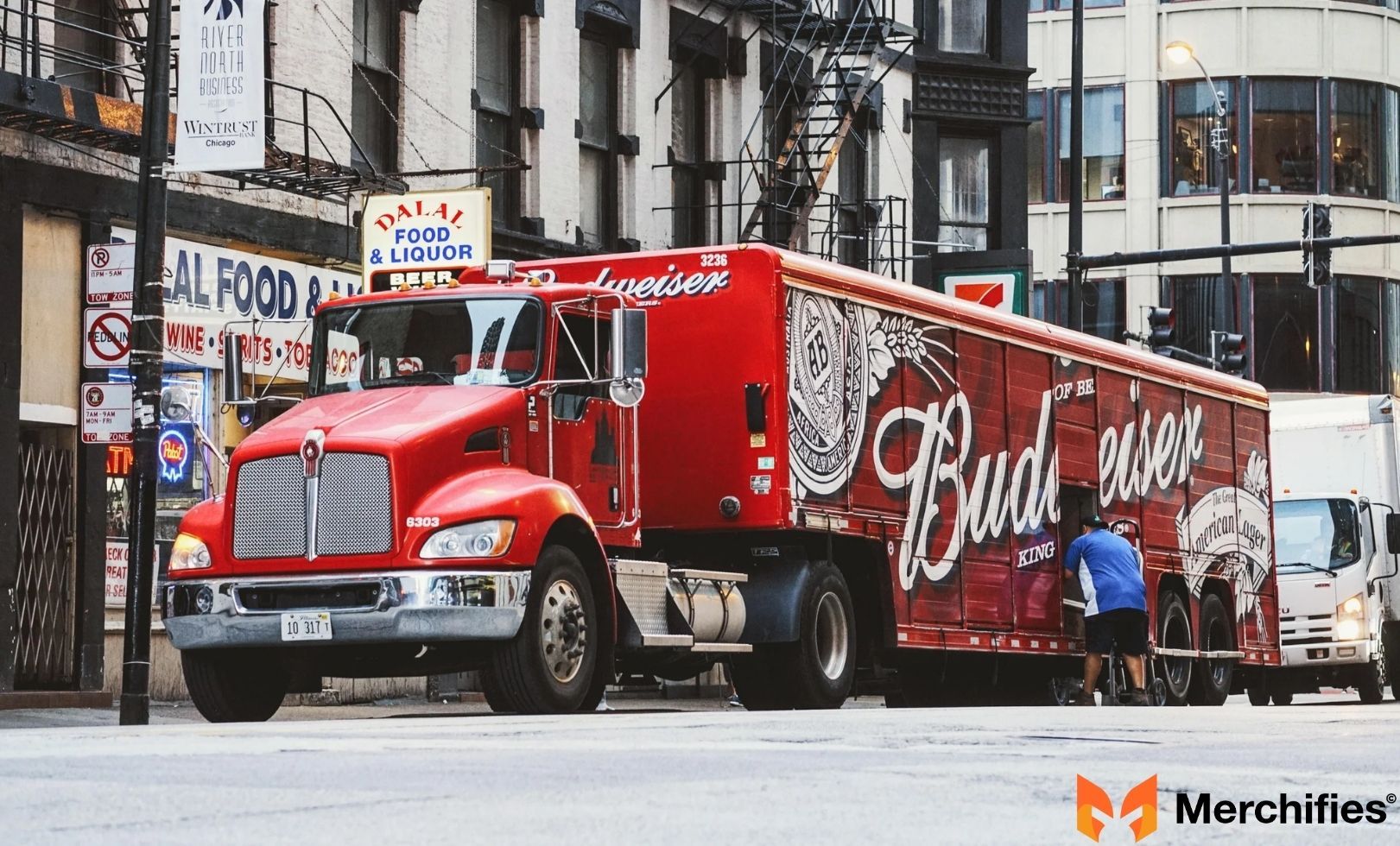
Blog Post Contents
Ever wonder what truckers actually wear during those 11-hour shifts? Marketing shows rugged cowboys in pressed denim. Reality looks completely different.
I spent weeks conducting truck driver interview sessions with dozens of professional drivers across Reddit, TruckersReport forums, and trucking communities. Their favorite truck shirt stories reveal surprising truths about comfort, professionalism, and what really works on the road.
One oilfield driver confession started a firestorm: "I wear sweatpants under my coveralls. It ain't a fashion show." Another veteran fired back: "Don't fall into sweatpants and sandals—makes you look like an asshole climbing down out of a big truck."
The debate between comfort and professionalism splits the trucking community right down the middle. From $200 boots lasting four years to $30 Walmart shoes replaced yearly, real truckers shared what they pack, wear, and swear by.
These aren't sponsored recommendations. Just honest trucker-to-trucker advice that could save you money and misery.
Why Trucker Clothing Choices Actually Matter
Professional appearance affects how DOT officers treat you during inspections. Shippers and receivers judge you in the first 30 seconds climbing out of your cab.
Comfort directly impacts safety. Get distracted by uncomfortable clothing for 11 hours and accidents happen. Sitting that long creates unique pressure points and wear patterns most people never experience.
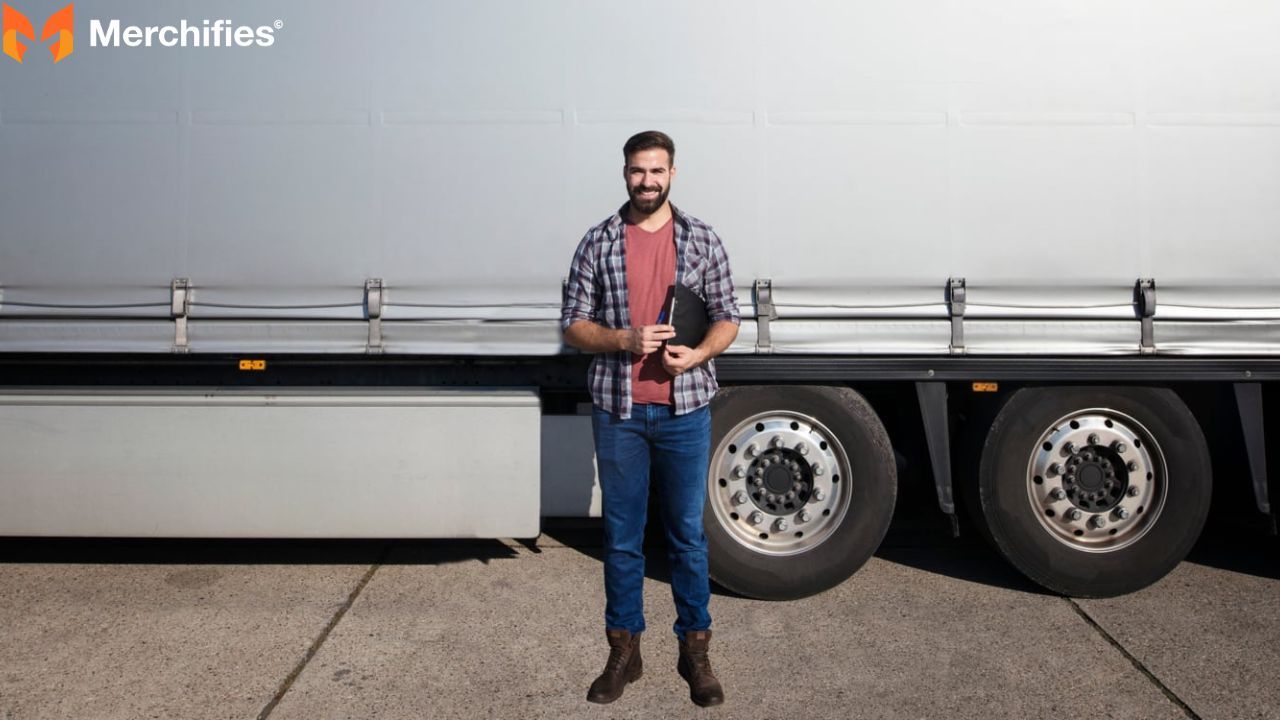
Weather extremes across regions require strategic planning. Limited cab space means every item must earn its place. Laundry facilities stay broken "half the time" according to veteran truckers, so you need sufficient rotation.
Loading and unloading require unrestricted movement. You're representing your company at customer locations. That matters for business relationships and repeat contracts.
Plus, work clothing expenses qualify as tax deductions. Save those receipts.
The Great Sweatpants vs. Jeans Debate
This truck driver interview controversy exploded on Reddit with passionate arguments from both sides.
The Sweatpants Revolution
AibohphobicKitty, an oilfield driver, started the conversation: "I wear sweatpants under my coveralls. Sweatpants are the absolute best thing when driving."
"I cannot drive in jeans. Don't know how people do that. Feels weird and constricting. It ain't a fashion show. Whatever is most comfortable for you."
Five upvotes and multiple "THIS" replies showed strong support. Younger truckers increasingly embrace athletic wear over traditional denim. Why suffer for 11 hours trying to look "trucker tough"?
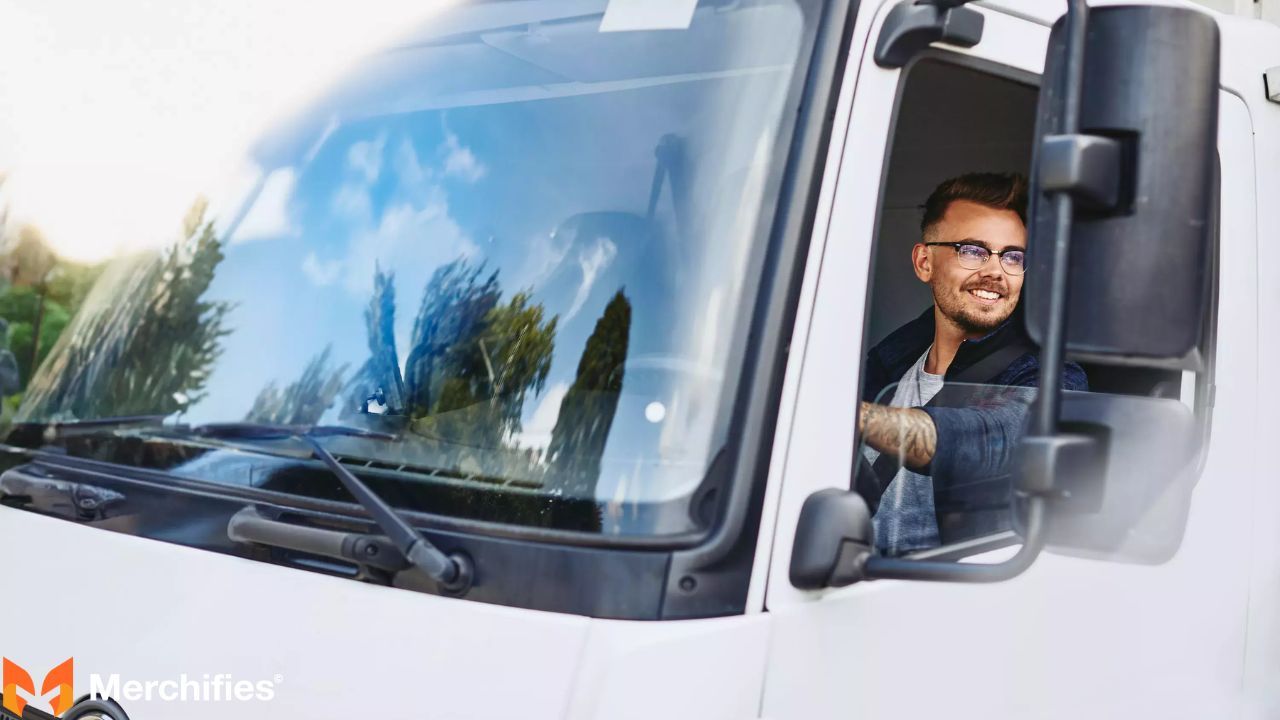
Sweatpants prevent chafing, allow better blood circulation, reduce pressure points. Easy on/off for 3 AM truck stop bathroom runs. Coveralls hide the casual appearance during customer interactions.
"Don't need to fit weird stereotype from oldschool guys with their jeans and cowboy boots," one driver added. Regional differences matter too—West Coast more accepting of casual comfort wear.
The Professional Appearance Counter-Argument
Accurate-Chapter-923, a veteran trucker, received 7 upvotes for the opposing view: "Don't fall into sweatpants and sandals category—makes you look like asshole. Sorry, my opinion."
How you dress affects DOT officer treatment during inspections. Ergofobe shared his experience: "Shippers and receivers treat you with more respect when you don't look like complete slob."
First impressions matter. That 30-second judgment determines your entire customer interaction tone. Professional appearance prevents extra DOT scrutiny you don't need.
"People want to look at you like a professional," another trucker emphasized. Traditional drivers value denim, boots, and button-downs as industry standard.
Age divide shows clearly: Older drivers insist on jeans, younger prioritize comfort. East Coast and Midwest stay more traditional than West Coast casual culture.
The Middle Ground Solution
Dickies cargo pants emerged as the compromise in multiple truck driver interview responses.
Ergofobe explained: "Durable, comfortable, not expensive. Creates clean professional look. Wallet in side pocket prevents back pocket sitting discomfort. Combined with Dickies button-down work shirts = professional without stiffness."
Duluth high-quality jeans earned praise: "Worth every penny" for comfort AND appearance. Carhartt jeans praised for surviving flatbed work abuse.
Loose-fit jeans with extra room essential. Tight jeans become miserable after hour three of sitting. Utility jeans with extra pockets hold flashlights, tools, small items you need accessible.
Clean jeans (no rips) maintain professional appearance without discomfort. Context matters enormously: Sweatpants acceptable for OTR solo driving, jeans for customer-facing roles.
Scottiethegoonie's wisdom resonated: "Wear whatever makes this job bearable."
T-Shirts & Tops - What Really Works
Solid-colored t-shirts beat graphic designs for professional appearance every time.
Veteran trucker advice from forums: "Get bunch of tee shirts in color that looks good on you. Something you can wear and look professional—huge difference in how you're received."
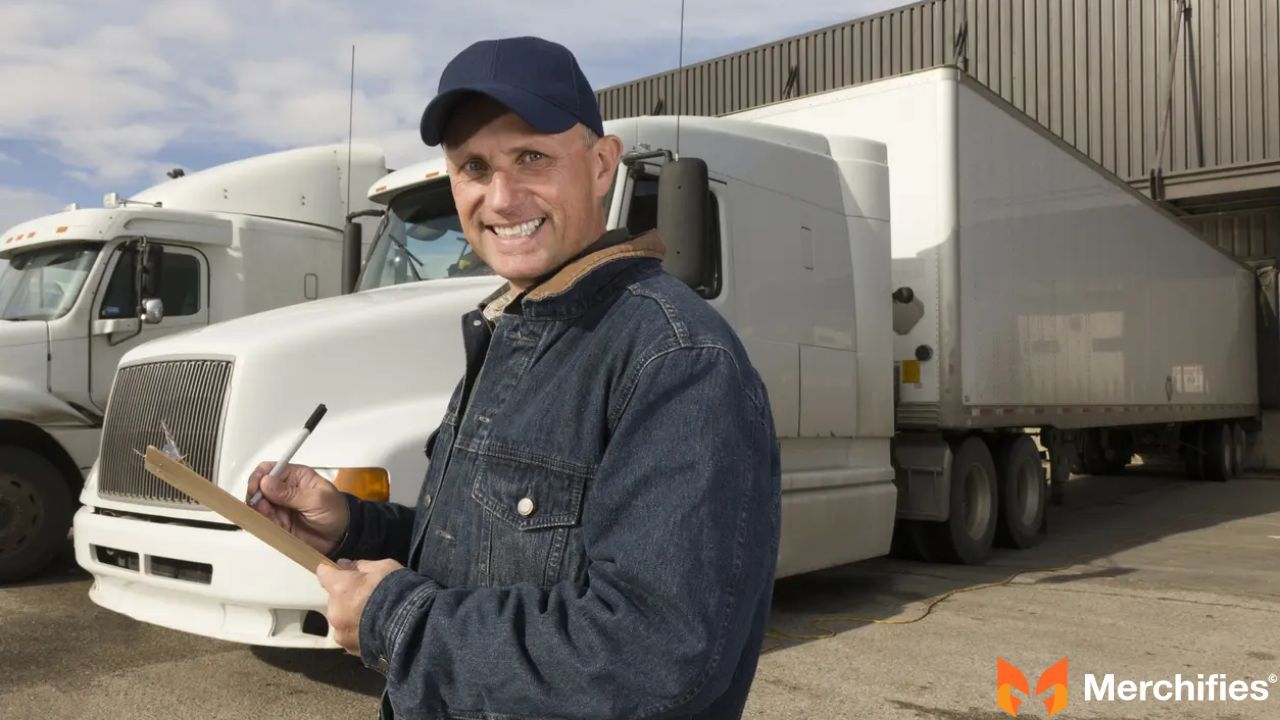
Band t-shirts with skulls and fire? Discouraged across the board. "Wearing band tee gets different reception than clothes without strange logos." No vulgar messaging or controversial designs—avoid unnecessary confrontation.
White undershirts layered under zip-ups create that clean Schneider-approved look. Hi-vis orange and yellow t-shirts for safety when working around trucks.
Pocket t-shirts stay popular for carrying phones, pens, snacks within reach. Keep logos simple—company logos acceptable, personal statements problematic.
Fabric Makes the Difference
Moisture-wicking breathable materials essential for hot weather. Schneider official recommendation: "Breathable shirts that wick away moisture."
Cotton blends with synthetic fibers keep you dry and fresh. Avoid 100% cotton in summer—holds sweat and stays damp for hours. Polyester blends dry quickly between wearings.
Long sleeve shirts for sun protection during summer actually feel cooler. UV protection fabrics prevent that windshield sun damage on your left arm every driver knows.
Thermal underwear tops under t-shirts for cold weather base layer. Soft fabrics prevent irritation during 11-hour shifts.
Layering Strategy
Zip-ups over t-shirts provide adjustable warmth without jacket bulk. Schneider recommendation: "Great to throw on when too cold for short sleeves, too hot for jacket."
Flannel shirts work perfectly in that temperature gap. Multiple favorite truck shirt stories mention carrying "at least 2 flannel shirts, more in winter."
Dickies button-down work shirts create professional appearance while breathing better than solid sweatshirts during physical work. Remove layers as day warms—morning freezing, afternoon sweltering across this country.
Footwear - Specific Brand Testimonials
Real truckers get passionate about boots. Here's what they actually recommend.
Premium Boots Worth the Investment
T20suave shared his Merrell Strongfield experience: "Used last 4 years. Super comfortable, wear them all day, super durable. Around $150-200, best boots for trucking in my opinion."
Red Wing boots earned multiple endorsements. IndependenceLumpy294: "Always been a fan fave." Chuuby_Gringo added: "Company gives Red Wing voucher every year. They're awesome."
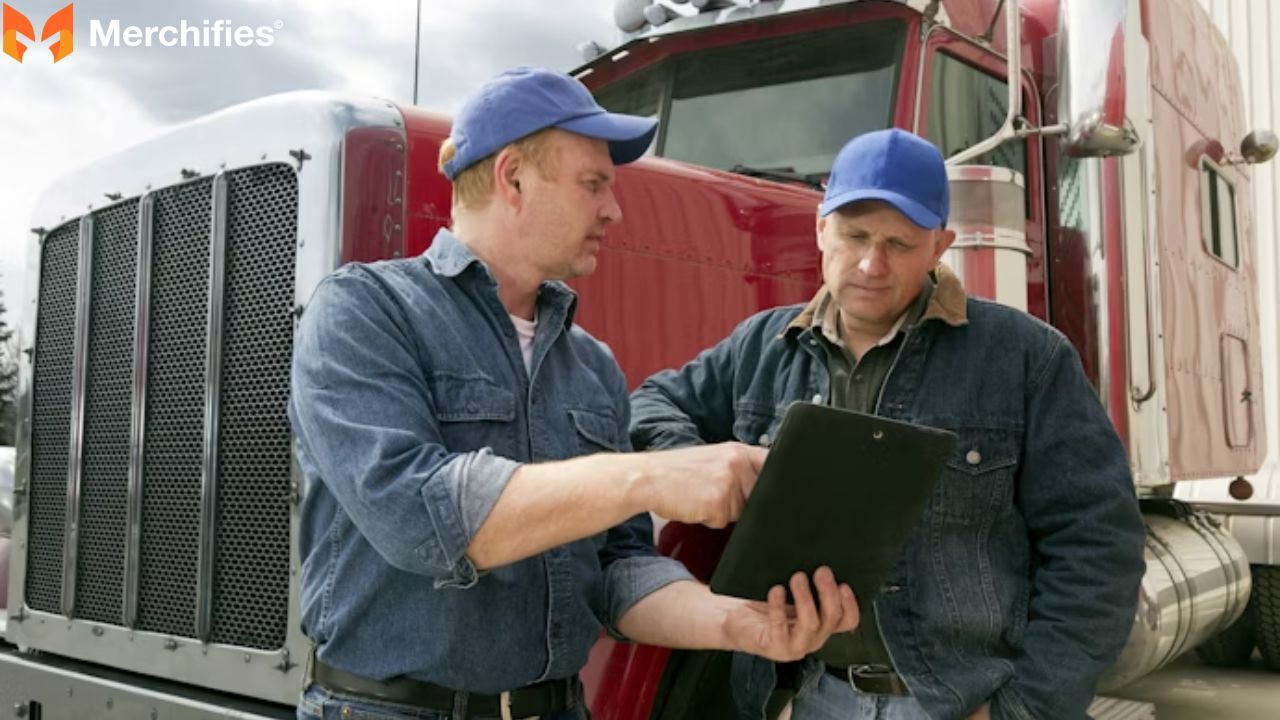
TheNerdiestAnarchist invested in Nicks Boots: "Buy once cry once kind of thing. Very comfortable, tough. Have two sets—one summer, one winter with different builds."
Custom-made, expensive, but lifetime investment approach. Another trucker praised Thorogood: "Most comfortable pairs of shoes I've ever owned. 2-3 years of heavy use if you maintain them with leather protectant products."
Georgia Logger Boots for winter flatbed work. Timberland Rig Master Safety Toe for fuel haulers and tanker drivers. IceLessTrash2 wore them across multiple trucking roles over years.
Wellington boots (pull-on western style): "$150 normally, $50-100 on sale. Stand in 5-inch puddle for 20+ minutes before water penetrates. Made for farm work—rounded toe, good grips. Check farming stores for best prices."
Mid-Range Practical Choices
Carolina Steel Toe: trucking_coins testimonial "comfortable and last 1 year when flatbed, 2+ years now doing reefer drop-and-hook."
Keen shoes: "Built for all-day walking, comfortable whole shift driving." Adidas Grand Courts from oilfield driver: "Amazing driving shoe, really comfortable."
Merrell slides perfect for truck stop runs: "Comfortable, easy on/off, durable."
Ergofobe switched from Merrell hiking boots to cowboy boots for breathability: "Hiking boots comfortable but feet get RIPE by day's end. Cowboy boots once broken in more comfortable and prevent foot odor. Leather lowers and oil-resistant rubber soles ideal combination."
Start Smart with Boots
Scottiethegoonie wisdom: "Don't spend too much on first pair. Once you get working, figure out what you actually need."
Walmart tennis shoes $30 with yearly replacement acceptable for reefer division. Less dirty yards mean tennis shoes adequate with one pair weather boots backup.
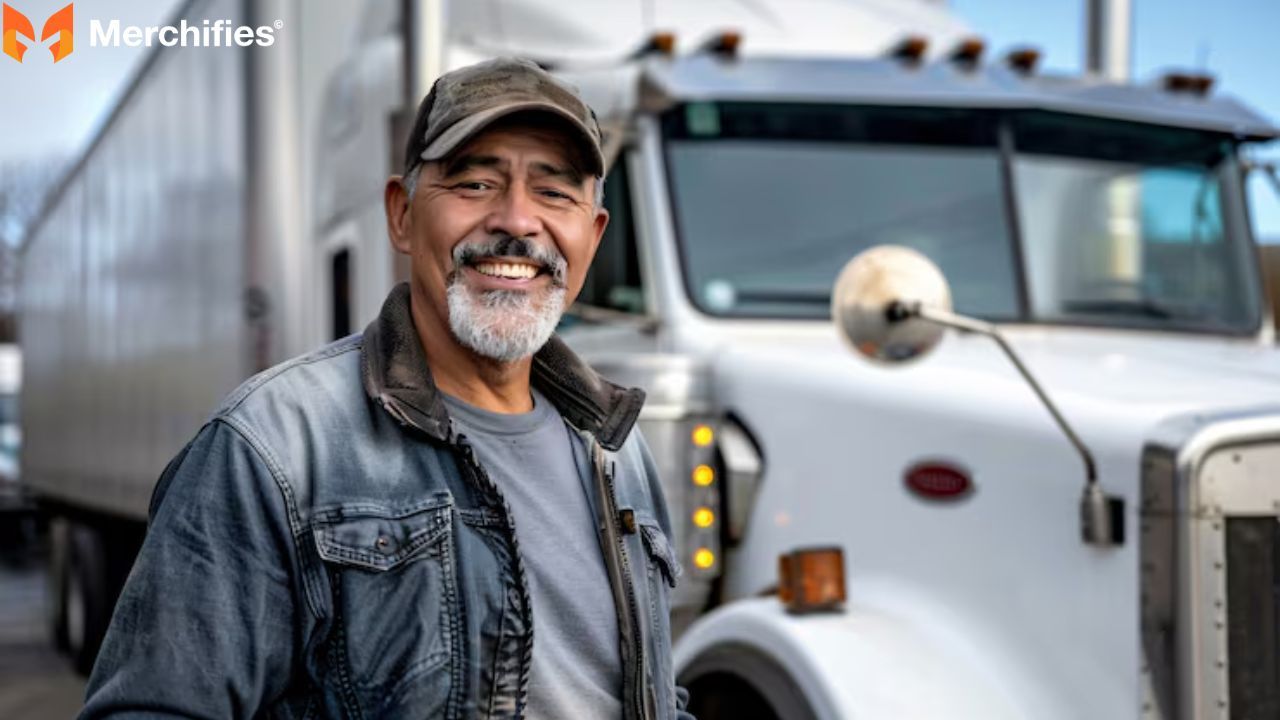
Flatbed mandatory steel toe from day one—budget $100+ minimum. Tanker and oilfield require safety toes no exceptions.
YohanSel01 reefer driver carries three types: all-weather boots, water-resistant sneakers, sandals. "Use sneakers/boots outside truck, sandals for showering."
Steel Toe vs. Composite Toe
Payment_in_potato: "Steel gets cold easily. Unless required, I'd go composite toe."
TheNerdiestAnarchist countered: "Don't find that much issue. Steel stronger and less bulky. Boots have two more layers full grain leather around toe box mitigating cold."
Darn Tough "Steelies" socks thicker around toe specifically designed for steel toe boots. Composite toe warmer but less protection. Steel required at many loading docks and customer facilities.
Division determines need: Flatbed requires steel, reefer doesn't.
Pants That Actually Work
Dickies cargo pants dominated every truck driver interview about pants.
Ergofobe explained why: "Durable, comfortable, not expensive. Wallet in side cargo pocket prevents back pocket sitting pain. Dickies sold at truck stops, Walmart, specialty work stores."
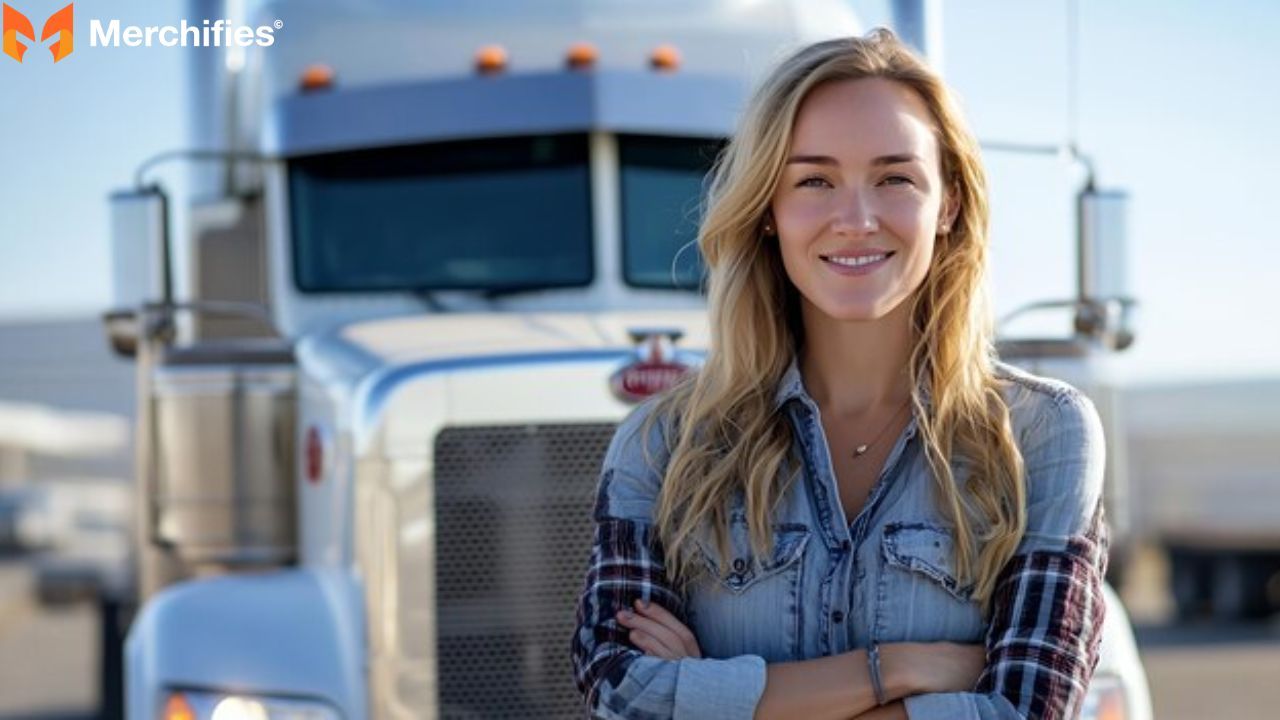
Wrangler cargo jeans got specific TruckersReport forum recommendation with link to western store utility jeans. Carhartt jeans praised repeatedly: "Strong fabric but also kinda elastic. Extremely comfortable for driving all day."
Ariat pants recommended alongside Carhartt for quality. Duluth: robexib "worth every penny" for premium comfort during 11-hour daily sits.
Fit Matters More Than Brand
Loose-fit jeans essential. Accurate-Chapter-923: "Lots of sitting so you need extra room. Get utility type jeans or work pants with extra pockets. Helps to have small bright LED flashlight at all times in utility pocket."
Clean jeans (no rips) maintain Schneider-required professional appearance. Cargo shorts for hot weather with functional pockets.
ExpedientDemise: "Jeans most of year but pocket cargo shorts when hot." Pack 3-5 pairs minimum—"don't want worrying about laundry. Facilities broken half the time."
Alternative Pants
Coveralls over sweatpants for oilfield—comfort hidden by professional outer layer. Carhartt overalls for flatbed winter work. Two sets: "Need to get under truck to work on it from time to time."
FR (flame-resistant) coveralls or pants for tanker drivers. Company uniforms solve decision fatigue when provided.
Akfisher1978: "Wear sweatpants literally every day with thermals underneath." Context determines acceptability—OTR solo vs. customer-facing roles entirely different standards.
Cold Weather Essentials
Carhartt jacket $120 mentioned in every cold weather discussion. Critical advice: "Get the LONG one. Short ones let cold air in at base of back. That sucks."
Budget alternative: Military flight jacket (nylon) $30-50. "Waterproof unless re-enacting great flood. Warm down to -20, comfortable up to +50."
One trucker kept his Carhartt 20 years: "$120 investment = $6 per year." Keep two jackets: One clean/presentable, one for dirty work.
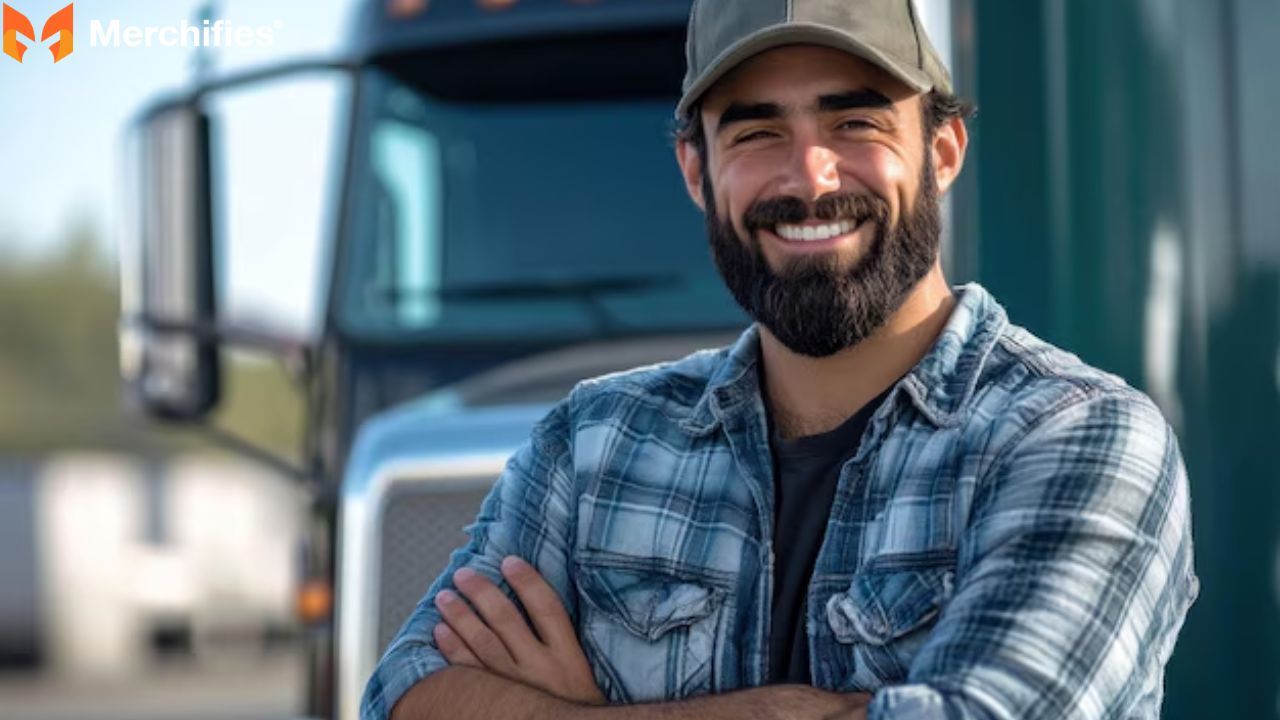
Extra winter coat essential "for when one gets soaking wet." Field and Stream rain gear set personally recommended. Waterproof everything for Pacific Northwest and winter routes.
Hats, Gloves & Layers
Western-style hat keeps rain off glasses and neck better than baseball cap. Carhartt cap with ear flaps: "Works well when cold but not cold enough for full hood."
Knitted hats for extreme cold. Ear muffs for bitter windchill. Decent scarf: "Almost never use it but miss it the one time you need it."
Warm gloves for walking to/from truck stops. Leather gloves for dirty work. Pro tip: "Put surgical gloves under leather, hands stay much warmer when chaining."
Extra work gloves: "Buy two pair when you find good ones—many fall apart first use."
Thermal socks prevent cold feet. Darn Tough "Steelies" specifically for steel toe boots. Thermal underwear tops and bottoms base layer necessity.
Reflective vest always carried. Hard hat for facilities requiring protection.
Winter Boots
Rubber high-traction waterproof boots for winter months. Construction and farm equipment haulers: "Rubber boots essential for muddy sites."
Two pairs essential: "Allow one pair to dry out" between wearing. Never wear wet boots—causes blisters and fungus.
WD-40 maintains boot water resistance. Wellington boots near waterproof for 20+ minutes standing in puddles. Keep boots by cab heater overnight.
Hot Weather Survival
Schneider official: "Breathable shirts that wick away moisture." Cotton blends with synthetic fibers keep you dry. Avoid 100% cotton—holds sweat.
Polyester blends dry quickly. Swift Transportation blog recommends Red Kap: "Designs apparel specifically for hot environments like warehouses."
Long sleeve shirts for sun protection paradoxically cooler. UV protection fabrics prevent left arm damage. Light colors reflect heat better than dark.
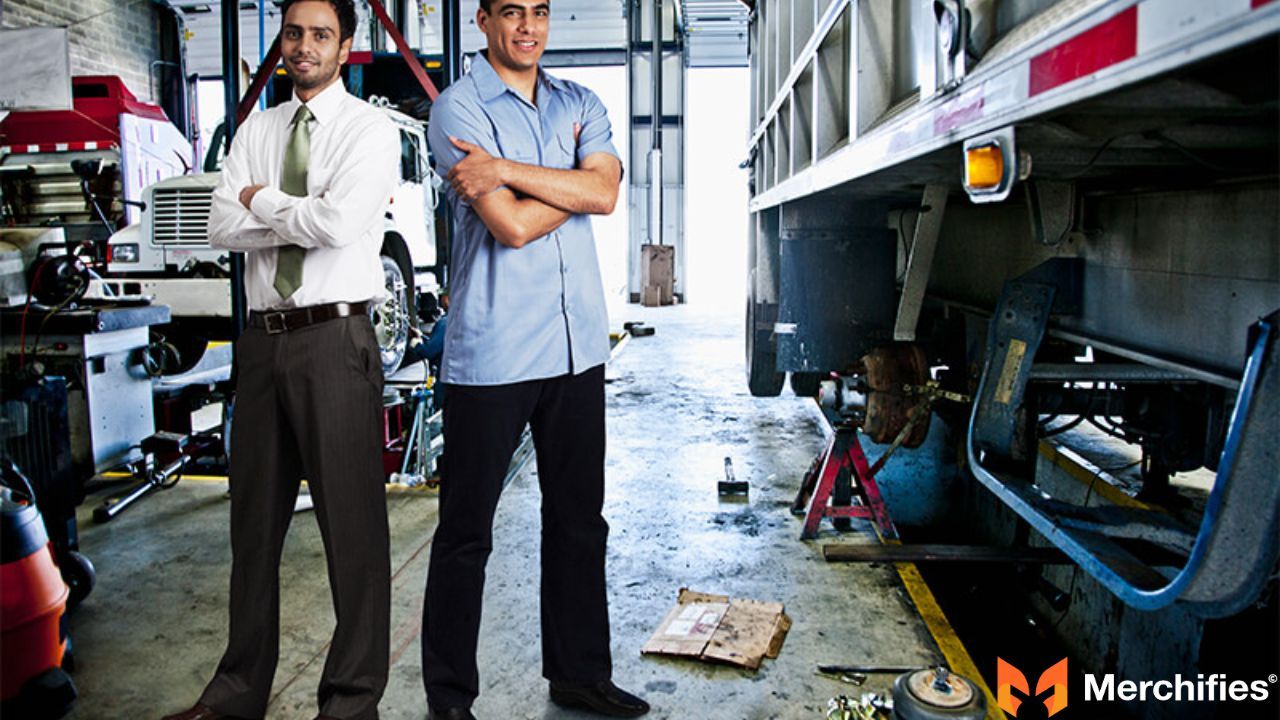
Cargo shorts when temperature exceeds 85°F. Tennis shoes or lightweight work shoes for reefer summer. Sandals and Crocs for showering and quick runs.
Never drive professionally in flip-flops. Baseball caps essential for sun and sweat management.
Two sets safety glasses (clear and polarized): "Working around truck, glasses get destroyed." Towel or two: "Expect unexpected showers."
Extra t-shirts in cab for mid-day changes after heavy sweating. Light jacket still needed—some warehouses freeze at 35°F year-round.
Professional Appearance Impact
"How you're dressed affects how you're treated by DOT officers. Plenty of clean clothes, shower regularly, wear clothes making you look professional. Not going to get attention that slob or gangster gets."
DOT officers judge professionalism before checking logs. Clean appearance suggests organized driver with maintained equipment. Sloppy appearance triggers suspicion about cutting safety corners.
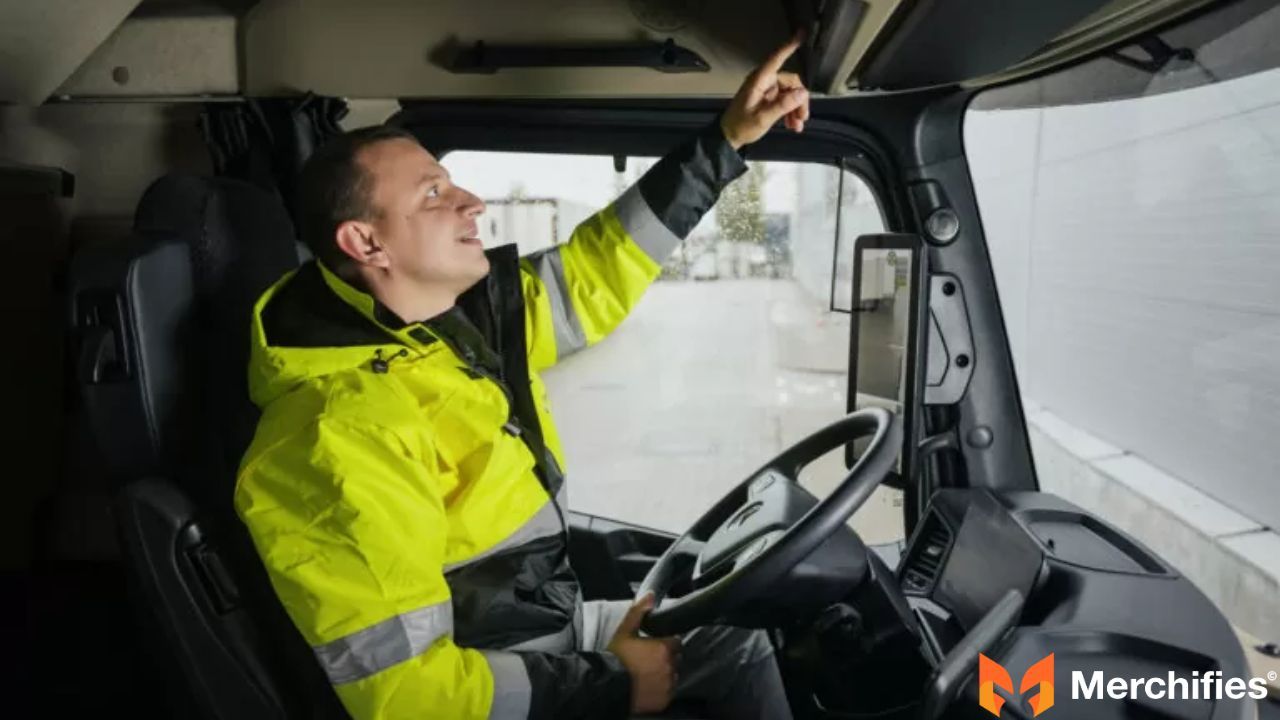
Shipper & Receiver Treatment
Ergofobe: "Shippers and receivers treat you with more respect when you don't look like complete slob."
First 30 seconds climbing out determines interaction tone. Warehouse workers judge professionalism before helping with paperwork. Professional appearance sometimes equals faster loading times.
Dickies cargo pants + button-down = "clean professional look." Customer-facing roles demand higher standards than OTR solo driving where nobody sees you.
The Clean Philosophy
Accurate-Chapter-923 all-caps emphasis: "CLEAN. CLEAN. CLEAN. Keep your stuff clean and look presentable—goes a long way."
Wrinkled vs. clean makes bigger difference than expensive vs. cheap. $20 Dickies shirt clean beats $80 designer shirt wrinkled.
"Wearing band tee with skulls gets different reception than clothes without strange logos." Appearance signals respect for job, company, customers.
Favorite truck shirt stories often mention learning this lesson the hard way after bad customer interactions or DOT hassles.
Division-Specific Requirements
Your trucking division determines clothing requirements dramatically.
Flatbed Trucking
Steel toe boots mandatory—no exceptions at most facilities. Carhartt overalls essential for winter. Leather gloves for handling chains, straps, tarps.
Georgia Logger Boots winter preference. Durable jeans survive constant kneeling on trailer decks. Hi-vis vest required at steel mills and construction sites.
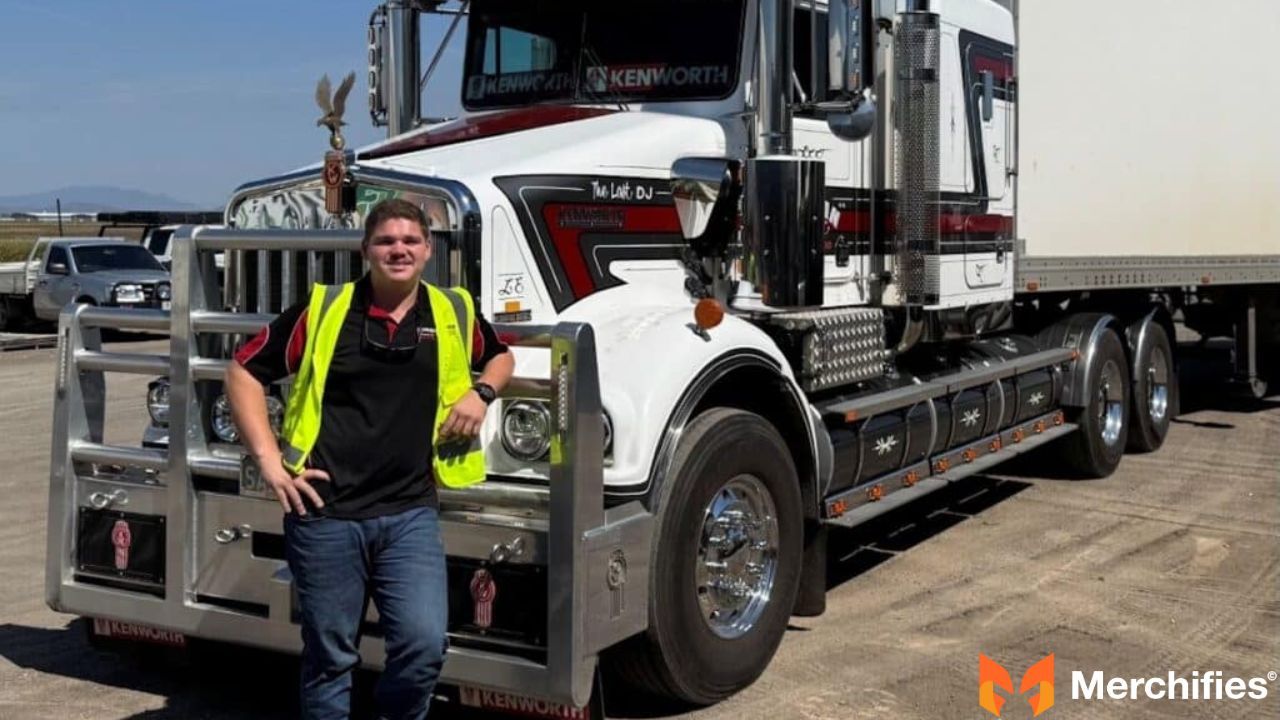
Hard hat carried always. Carolina Steel Toe last 1 year of flatbed abuse according to testimonials.
Reefer & Dry Van
YohanSel01 reefer driver: "Don't really get into dirty yards that often." Tennis shoes adequate with one pair all-weather boots backup.
Water-resistant sneakers easy without laces. Sandals/Crocs for showering, sneakers/boots outside truck. Dry van most flexible—comfortable professional sufficient.
Still carry steel toe boots: "Never know when you'll need them." Light jacket essential—reefer warehouses freezing year-round.
Tanker & Hazmat
FR (flame-resistant) coveralls or pants sometimes required. Timberland Rig Master Safety Toe popular with fuel haulers.
IceLessTrash2 wore them multiple tanker roles. Chemical haulers get company-provided uniforms with safety features. Cintas uniforms common for fuel delivery.
Hard hat, safety glasses, reflective vest always required. Steel toe non-negotiable. Coveralls preferred: "Pen pocket on left arm—the little things."
Oilfield & Construction
AibohphobicKitty oilfield system: Coveralls over sweatpants. Steel toe rubber boots for loading/offloading oil. Adidas Grand Courts for driving comfort between sites.
Sun hat, company tee, Carhartt jeans for drilling rig drivers. Rubber muck boots essential for muddy construction and farm sites.
Ready-mix drivers: Leather steel toe, jeans, t-shirt, hi-vis vest.
Female Trucker Considerations
Women not expected to dress different than men professionally. Kellylynn (Schneider driver, Women in Trucking Ambassador) created specific advice video addressing unique challenges.
Fit challenges: Women's bodies require different pant cuts for sitting comfort. Work boot manufacturers often don't carry adequate women's sizes. Safety considerations—professional appearance reduces harassment concerns.
Sports bras essential for bumpy roads and physical work. Hygiene access limited, requiring strategic planning.
MeTooeither shared her fashion guide: "Pink hi-vis vests, pink hard hats, black and pink gloves. Multi-colored tennis shoes from Walmart. Brown and pink steel-toed boots waterproof and adorable."
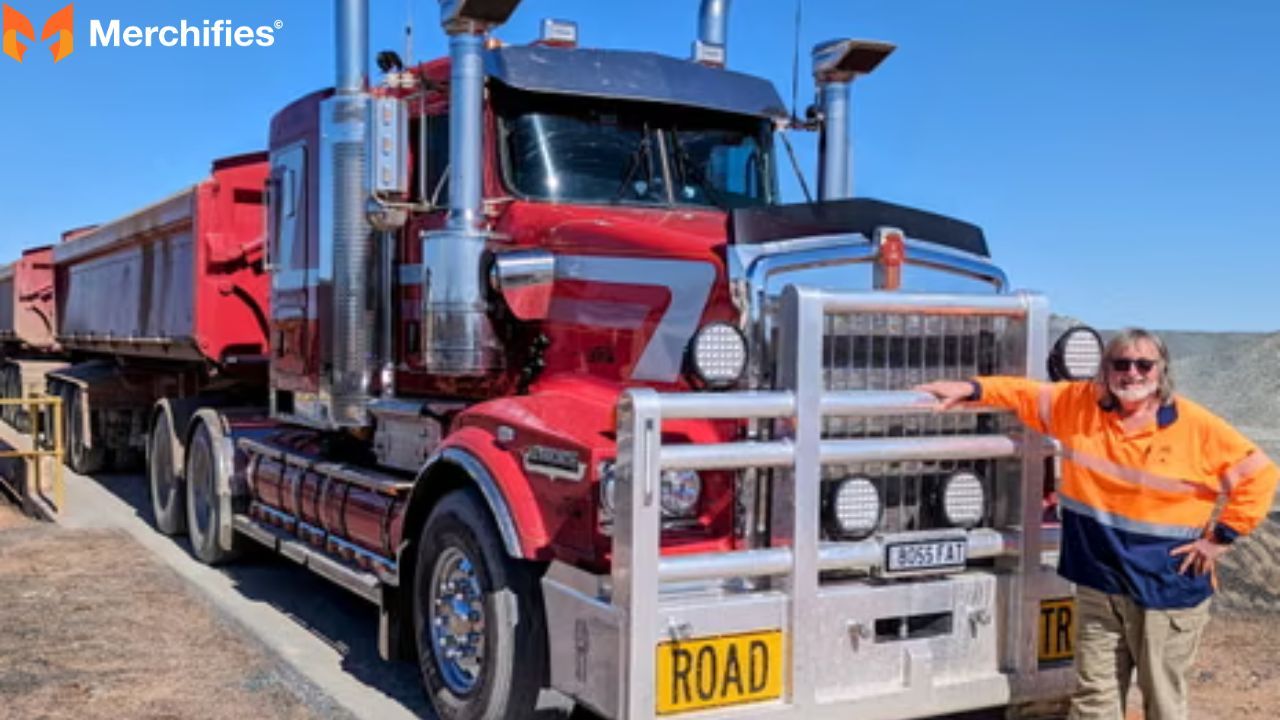
Feminine touches acceptable when maintaining professional standards. Cargo pants solve storage without purses. Button-downs professional without being formal.
Packing Strategy
Pack 3-5 pairs jeans minimum for extended trips. "Don't want worrying about laundry—facilities broken half the time."
Two pairs work boots: One wearing, one drying. 7-10 t-shirts for weekly rotation. 3-5 long sleeve shirts or flannels for layering.
Two jackets: One clean/presentable, one dirty work. Thermal underwear 2-3 sets. 7-10 pairs socks and underwear minimum.
Shorts and sandals for wee-hours runs: "Don't like tying work boots every time at 3 AM." Bag for dirty clothes organization.
Backup Items
Extra winter coat for when primary gets soaking wet. Towel or two: "Expect unexpected showers." Extra glasses if you wear them—critical backup.
Two sets safety glasses. Multiple work gloves: "Many fall apart first use." Muck boots and lace-ups for different conditions.
Reflective vest always. Rain gear for unexpected downpours. Compression socks for blood circulation during long sits.
Small LED flashlight in utility pocket. Extra belt: "Often forgotten, always needed." WD-40 for boot water resistance. Leather protectant for boot longevity.
Budget Tips from Veterans
Boots: $150-200 quality lasts 2-4 years vs. $50 cheap lasts 6 months. Scottiethegoonie: "Don't spend too much on first pair—learn what you need."
Dickies best value: Affordable yet professional quality. Walmart tennis shoes $30 yearly replacement acceptable for some divisions.
Duluth jeans: "Worth every penny" premium investment. Military surplus flight jacket $30-50 performs like $200 brands.
Wellington boots $150 normal, $50-100 on sale at farm stores. Carhartt 20-year testimonial: $120 = $6 per year.
Thorogood boots with maintenance: 2-3 years justifies $150+ cost. Premium for daily use, budget for occasional needs. Invest in footwear, save on accessories.
Tax Deductions Matter
Save all receipts: Work clothing expenses tax deductible. Gdyupgal TruckersReport: "Use items as work-related expenses = tax deduction."
Company logo items more clearly work-related for IRS. Plain clothes harder to justify but potentially deductible. Boots, gloves, hi-vis gear clearly work-related.
Consult tax professional for specific guidance. $500-1,000 annual clothing budget = $100-300 tax savings. Makes premium investments more affordable post-tax.
Frequently Asked Questions
What do truck drivers actually wear on the road?
Most truckers wear comfortable jeans or cargo pants, solid-colored t-shirts or button-down work shirts, and quality work boots. Dickies cargo pants and Carhartt jeans dominate preferences. For footwear, Merrell Strongfield, Red Wing, and Thorogood boots get recommended most. Professional appearance matters for DOT interactions and customer relationships, but comfort essential for 11-hour daily shifts.
Why do some truckers prefer sweatpants over jeans?
Sweatpants prevent chafing, allow better blood circulation, and eliminate pressure points during extended sitting. Jeans feel "weird and constricting" according to drivers who switched. However, professional appearance advocates argue sweatpants look unprofessional climbing out of trucks. The compromise: Dickies cargo pants offering comfort with professional appearance, or coveralls over sweatpants hiding casual wear.
What boot brands do professional truckers recommend?
Merrell Strongfield ($150-200, lasts 4 years), Red Wing (company voucher programs common), Thorogood (2-3 years with maintenance), Nicks Boots (premium custom investment), Carolina Steel Toe (1 year flatbed, 2+ years reefer), Timberland Rig Master (fuel haulers), Georgia Logger (winter flatbed), and Wellington boots ($150, near waterproof). Budget option: Start mid-range, upgrade after learning division requirements.
How many clothing items should truckers pack?
Minimum: 3-5 pairs jeans, 7-10 t-shirts, 3-5 long sleeve shirts, 2 jackets, 2-3 thermal underwear sets, 7-10 pairs socks/underwear, 2 pairs boots. Reason: Laundry facilities broken "half the time" requiring sufficient rotation. Allow boots to dry between wearings. Pack bag for dirty clothes organization. Include backup items: extra glasses, multiple work gloves, rain gear, compression socks.
What's the difference between flatbed and reefer clothing requirements?
Flatbed mandatory: Steel toe boots, durable jeans for kneeling, Carhartt overalls (winter), leather gloves for chains/tarps, hi-vis vest, hard hat. Physical work demands durability. Reefer: Tennis shoes adequate, less dirty yards, one pair all-weather boots backup, light jacket (warehouses freeze year-round). Reefer more flexible, flatbed requires safety gear consistently.
Do truckers need steel toe boots?
Depends on division. Flatbed, tanker, oilfield, construction hauling: Steel toe mandatory at most facilities. Reefer, dry van: Not required but recommended carrying backup pair. Steel toe debate: Steel gets cold but stronger/less bulky than composite. Composite warmer but less protection. Many loading docks won't let you out without steel toe regardless of division.
Your Wardrobe Starts Here
These truck driver interview responses reveal the comfort-professionalism balance every trucker navigates. The sweatpants vs. jeans debate shows generational and regional differences that won't resolve soon.
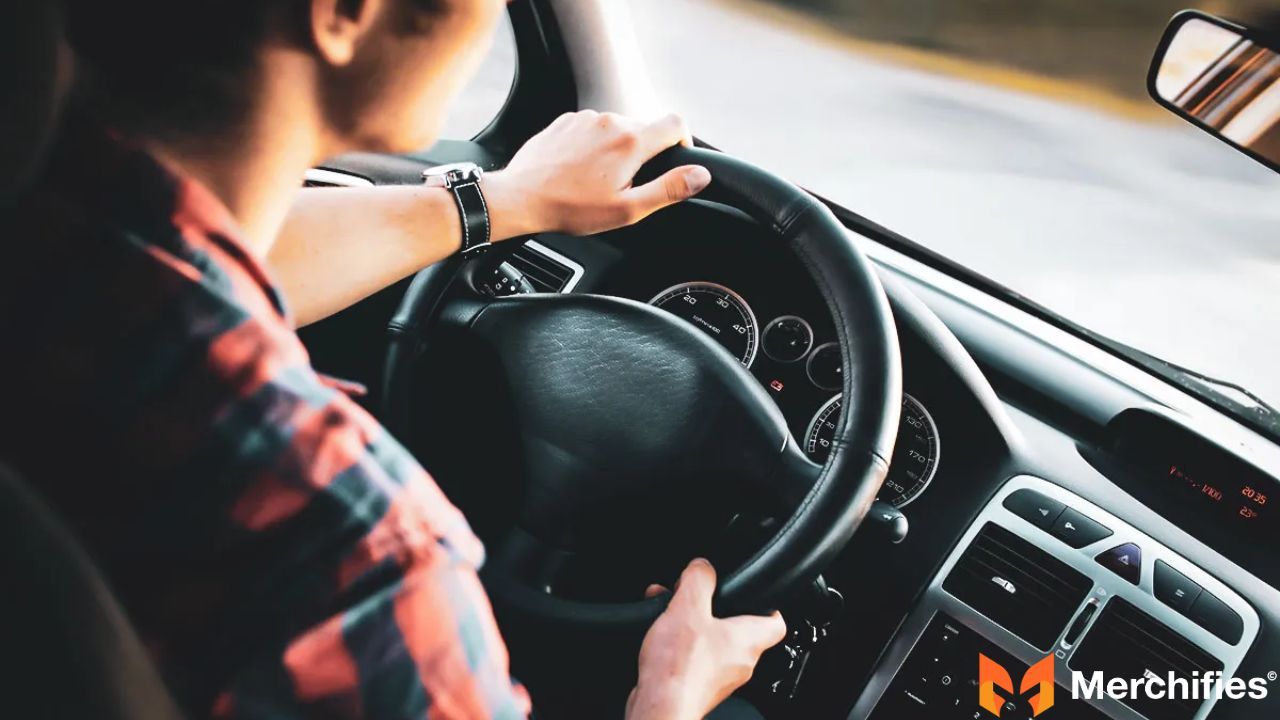
Dickies cargo pants emerged as compromise satisfying both camps. Footwear testimonials unanimous: Invest in quality boots paying long-term dividends.
Professional appearance measurably affects DOT treatment and customer interactions. Division determines requirements—flatbed needs steel toe, reefer doesn't. Layering strategy essential for cross-country temperature extremes.
Start with mid-range investments. Learn actual needs before premium purchases. Prioritize comfort without completely sacrificing professional appearance.
Pack 3-5 jeans, 7-10 shirts, two boot pairs minimum. Budget $300-500 initial wardrobe for complete starter set.
Learn from veterans: "Don't look like slob, don't be uncomfortable." Context matters—OTR solo allows casual, customer-facing demands professional.
Save receipts for tax deductions reducing effective costs. Join Reddit r/Truckers and TruckersReport forums for ongoing advice. Real truckers share honest recommendations without sponsorship bias.
Your clothing choices impact safety, professionalism, and daily comfort equally. Invest wisely, stay clean, stay comfortable, stay professional. That's the message from every favorite truck shirt stories shared by working drivers nationwide.